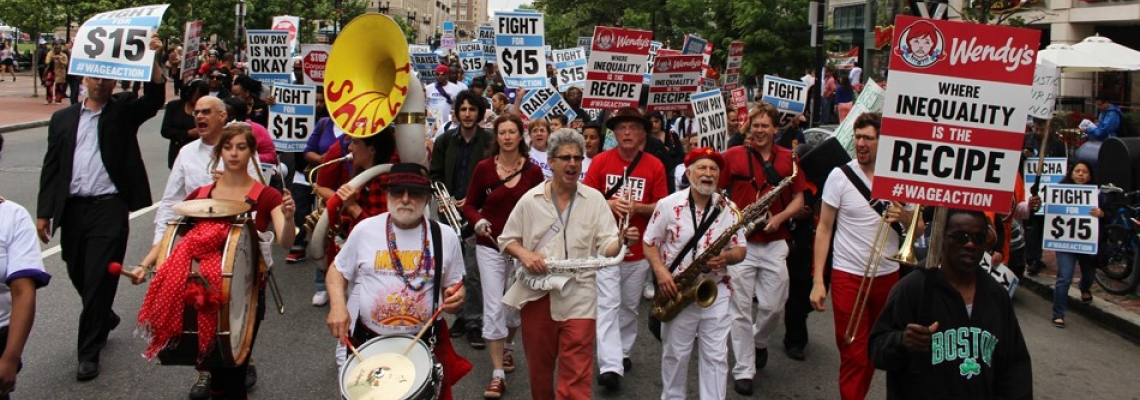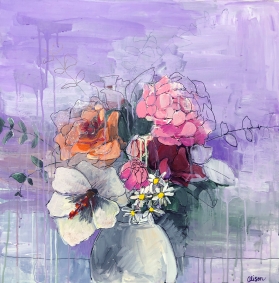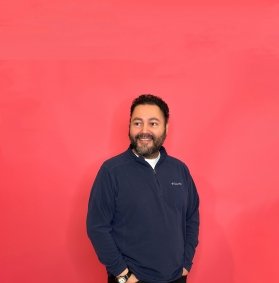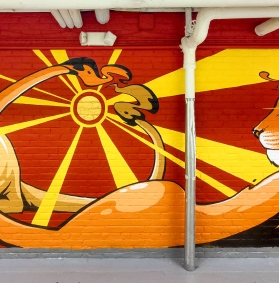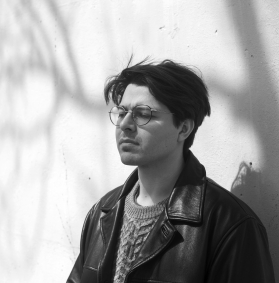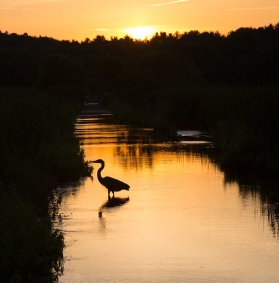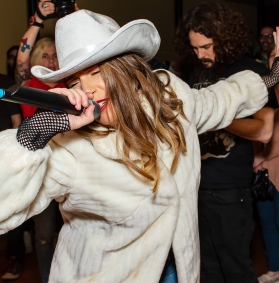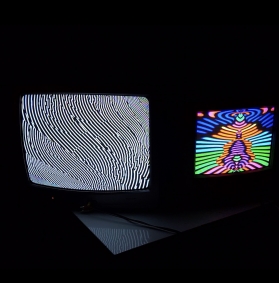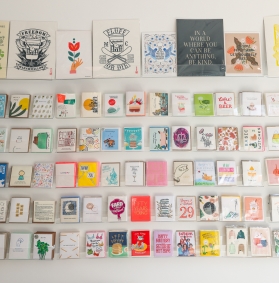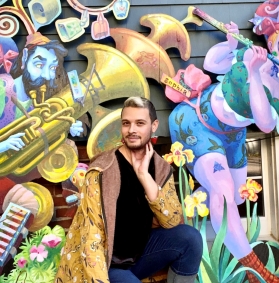Interview with Artist of the Month, Reebee Garofalo, as told to Gregory Jenkins
I know you’ve been playing music for a long time, but tell us more how you started playing, when, where, who were your mentors?
I started out with music in my bones. My mother lead an all female jazz band in the 1930s called Evelyn and her Mood Indigo Girls. Her older sister played piano for the silent movies. Her younger brother fronted a 15 piece swing band. In high school, I played drums in the marching band, the swing band, and the concert band. Thereafter, I joined numerous bands playing rock ‘n’ roll, acid rock, folk, and soul/r&b.
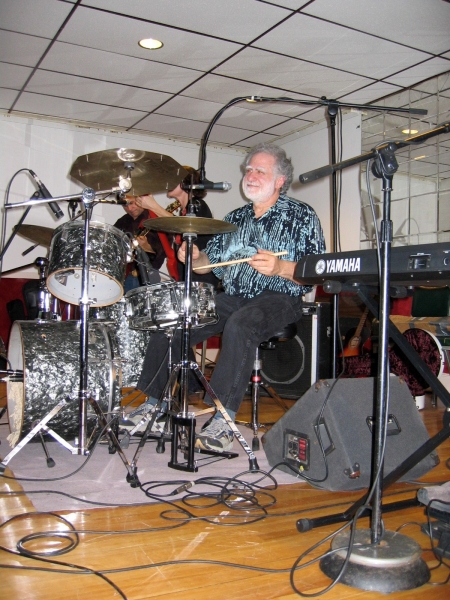 I became politicised in college when I was recruited to do voter registration work as part of the Mississippi Freedom Summer Project in 1964. Aside from being an intense political baptism, I was struck by the value of music to all our organizing efforts. Singing was everywhere. The vision of a powerful mass movement fueled by music has been with me ever since.
I became politicised in college when I was recruited to do voter registration work as part of the Mississippi Freedom Summer Project in 1964. Aside from being an intense political baptism, I was struck by the value of music to all our organizing efforts. Singing was everywhere. The vision of a powerful mass movement fueled by music has been with me ever since.
To help build such a movement, when I moved to Cambridge in 1970, I joined a group called Entropy, Inc. Entropy produced concerts all over New England – Bonnie Raitt, Mahavishnu Orchestra, Tower of Power, Taj Mahal, to name a few – and gave the money away to political projects and community organizers.
Entropy became the unlikely subject of my doctoral dissertation at Harvard, and lead directly to the publication of my first book: Rock ‘n’ Roll is Here to Pay: The History and Politics of the Music Industry (1977). That book ushered in a 35 year academic career of teaching, writing, and lecturing about music and politics, during which I produced five books and countless articles, and created the Genealogy of Pop/Rock Music, a graphic representation of the rock ‘n’ roll era, which has been reproduced in a dozen or so graphic design texts, including Ed Tufte’s seminal text, Visual Explanations, and graced the public wall of the Institute for Contemporary Art for a year in 2008, albeit without my permission. But that is another story.
While still at Harvard, I organized a band with some musician/economists from the Union of Radical Political Economists (URPE) called Red Shadow: The Economics Rock and Roll Band. Our two albums, Live at the Panacea Hilton and Better Red, became instant classics in certain economics circles.
In 1979, I became a co-producer of Amandla: Festival of Unity, a benefit concert for the liberation organizations in Southern Africa featuring Bob Marley and the Wailers in Harvard Stadium. Later that same year, I helped organize Mass Rock Against Racism, where I spent the next seven years mentoring young people using rap and popular music to protest racial violence and combat racisism among high school students in the Greater Boston area.
In the 1980s I returned to my roots as a performer and vocalist and started jamming with various musicians until we hit on the combination that became the Blue Suede Boppers, a fifties rock ‘n’ roll band that performed actively for 30+ years without a personnel change. We played for swing dances. We did benefit concerts. Toward the end of this period, the core of my musical identity as a performer and an activist was gradually taken over by the Second Line Social Aid and Pleasure Society Brass Band (SLSAPS) and the HONK! Festival.
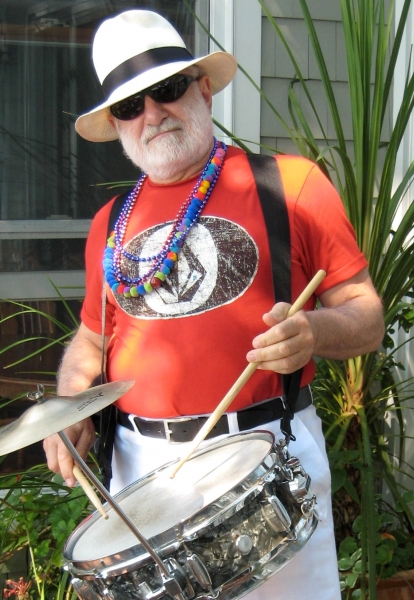 You are involved with Honk, but tell us more, how did you get involved and how has HONK developed over the years?
You are involved with Honk, but tell us more, how did you get involved and how has HONK developed over the years?
The first time I heard about HONK! I knew I wanted to join the band and help organize the festival. The opportunity to do both came in 2007; I have continued in both roles ever since. I remembered how to march with a snare drum from my high school days. And the core repertoire of SLSAPS was from New Orleans, not unlike the r&b I had played for years with the Blue Suede Boppers. The fact that SLSAPS was an activist band founded during an anti-Iraq War demonstration in 2003 was a big plus. It suggested that when they got around to organizing the first HONK! Festival, it would have the same progressive character as the band.
For me, HONK! represented the community-building potential of the civil rights movement on steroids. HONK! bands are loud, acoustic, and mobile. They can play anywhere they want, at a moment’s notice, unencumbered by stages and sophisticated technical gear. They can take the energy of any demonstration and kick it up a notch. They can build alliances across issues of income equality, racism, climate change, gender equity, immigrant rights, affordable housing, and more. And all of these causes can be brought together at the HONK! Festival.
HONK! caught fire immediately. There are now two dozen or so HONK! Festivals on four continents. Like I said: movement-building on steroids. You can read all about it in my most recent edited book: HONK!: A Street Band Renaissance of Music and Activism. Or, better yet, join us for this year’s festival in Davis Square on October 4–6, 2024.
In 2020 the pandemic forced the cancelation of all the HONK! Festivals. To compensate, HONK! Somerville, organized an interactive virtual festival called HONK!United that was live streamed world-wide. It turned into eight days of programming with 70 bands participating from all seven continents – yes, even Antarctica. HONK!United gave the HONK! community an incredible view just how far and wide our influence had spread. All of it and more is archived on the HONK! YouTube channel.
You’re involved in a large brass band, how the band evolve and change over time? What’s that like for you as an individual musician.
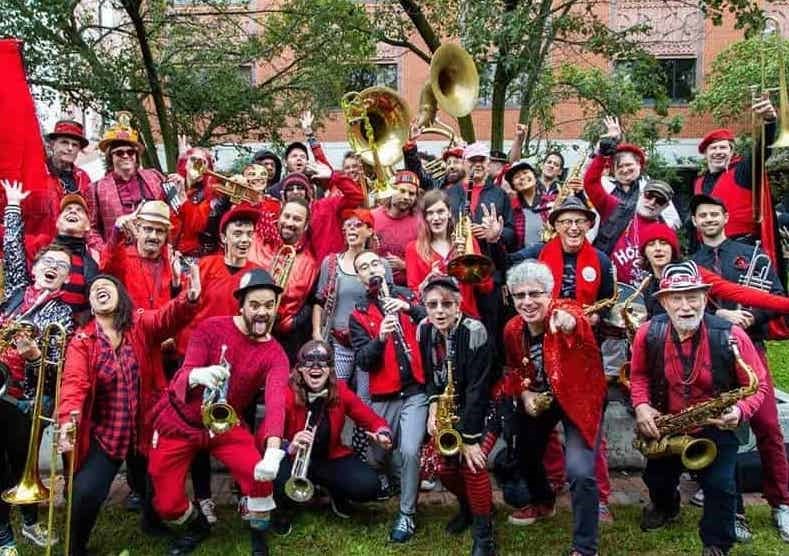 When I joined the SLSAPS, it was a 15 or so piece band ranging in age from around 30 to mid-fifties. At then 62, I pushed the limits. There were differences between members who wanted to maintain a small, tight, professional sounding band and those who favored a sprawling mess of an ensemble that could blow the roof off of a demonstration and still sound good. I favored the latter configuration. One thing we all agreed on was that it had to be fun.
When I joined the SLSAPS, it was a 15 or so piece band ranging in age from around 30 to mid-fifties. At then 62, I pushed the limits. There were differences between members who wanted to maintain a small, tight, professional sounding band and those who favored a sprawling mess of an ensemble that could blow the roof off of a demonstration and still sound good. I favored the latter configuration. One thing we all agreed on was that it had to be fun.
The make-up of the band began to change when we started to play for Occupy Boston in 2011 As we led parades around Dewey Square young people started coming out of their tents asking about joining the band. A decade later we had become a 30 piece ensemble, paying more attention to diversity along the lines of race, gender, and gender identification, with an age range from early 20s to almost 80. And as the guy still holding down the upper age limit, I absolutely cherish the opportunity to relate to people who could be my grand-children as peers.
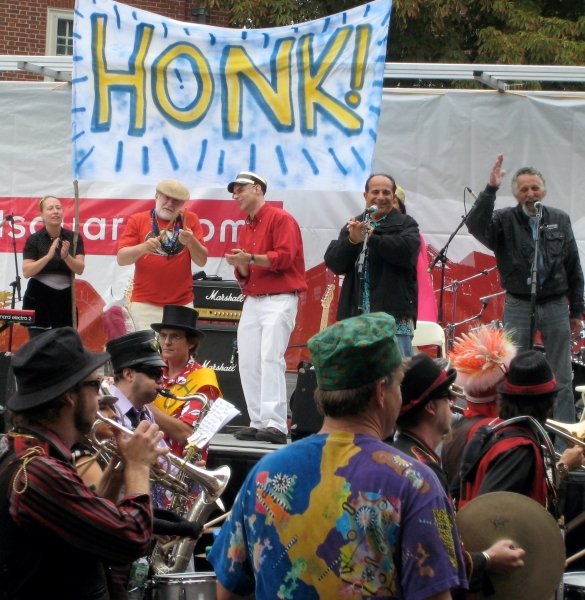
In 2023, the band changed its name to the Good Trouble Brass Band to honor the simple, yet powerful, maxim of the late civil rights icon John Lewis, who once said: “When you see something that’s not right … get in trouble, GOOD TROUBLE.” It seemed like a more fitting name for these troubled times. It’s not always easy, but we still sound good, we’re still having fun, and we hope we’re making a difference.
Do you have a favorite location in the City that inspires you musically?
Somerville and it environs have always been home to exceptional music venues. Too many of them have fallen by the wayside. But there is one venue that had always held a special place in my heart, and that, of course, was Johnny D’s. That they could bring in such an incredible range of top notch talent, in such a funky physical space, with a Cheers-like atmosphere, and make the whole thing work, was truly magical. My wife and I held our wedding reception there. We were devastated when we heard they were closing. My one consolation was that SLSAPS was asked to lead a second line parade in honor of its demise, making us one of the last band ever to perform at Johnny D’s.
At present, my biggest beef is that most clubs have become standing room only. I long for a club where one can sit down and eat a meal, listen to a good band, and get up and dance, all in the same place. Johnny D’s, where art thou?
